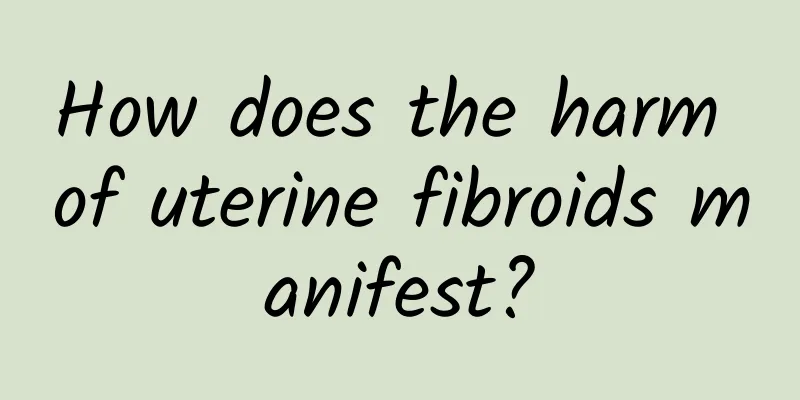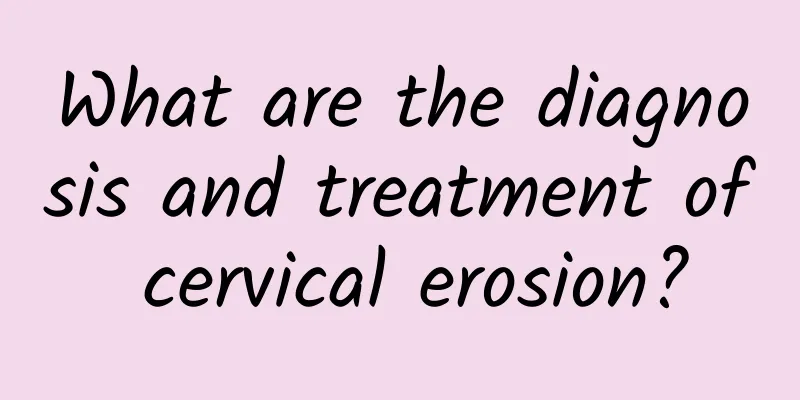The causes of multiple uterine fibroids. Will multiple uterine fibroids become malignant?

|
Uterine fibroids are common benign tumors in the reproductive system, which are more common between the ages of 35 and 50. They are very important to the lives and work of female friends. So, do you know what the causes of multiple uterine fibroids are? What are the effects of uterine fibroids? Uterine fibroids are usually multiple, and different types of fibroids can occur in the same uterus at the same time, which is called multiple uterine fibroids. The causes of multiple uterine fibroids are as follows: 1. Multiple uterine fibroids are often complicated by endometrial hyperplasia; 2. Patients with ovarian granulosa cell tumor and theca cell tumor (which can secrete estrogen) often have uterine fibroids; 3. During pregnancy, estrogen levels increase and fibroids grow rapidly; 4. Exogenous estrogen can accelerate the growth of fibroids; 5. Multiple uterine fibroids appear in women after menarche, which are more common in middle-aged women. After menopause, the fibroids stop growing and gradually shrink. If uterine fibroids continue to grow, the chance of malignancy will gradually increase. If not treated in time, it may even cause the following hazards: 1. Secondary anemia: Uterine fibroids can cause excessive menstrual bleeding. Over time, it can lead to secondary anemia and even anemic heart disease. In severe cases, patients may experience general fatigue, pale complexion, palpitations, shortness of breath and other adverse symptoms. 2. Adhesion or inflammation: After the subserosal uterine fibroid pedicle is twisted, intestinal adhesion will occur, and then it will be infected by intestinal bacteria. Inflammatory fibroids will adhere to the uterine appendages, causing suppurative inflammation. On the other hand, fibroids can also cause bacteria to invade other uterine organs, causing gynecological inflammation such as adnexitis and pelvic inflammatory disease. 3. Infection and suppuration: Uterine fibroids can cause pelvic congestion and infection. The infection is mainly caused by the torsion of the tumor pedicle, while hematogenous infection is extremely rare. After infection, a few patients develop abscesses in the tumor tissue, while the rest show suppuration. Uterine fibroids are very harmful to women's physical and mental health. Women must prevent gynecological diseases such as uterine fibroids in their daily lives. |
<<: What are the symptoms of multiple uterine fibroids? How to treat multiple uterine fibroids?
Recommend
Banana vinegar is a popular way to lose weight in Japan and South Korea, but it is very costly
Obesity is the public enemy. Recently, the "...
People with stomach problems are prone to metabolic syndrome. Here are the 5 major risk factors! Nutritionist: These tests make visceral fat invisible
People with abdominal problems should pay attenti...
What are the dangers of cervicitis
Cervicitis is a relatively common disease, so we ...
The symptoms of early cervical erosion are introduced to women
Women should know about the symptoms of early cer...
How many days after miscarriage can you wash your hair? You will know after reading this
In order to stay beautiful, most women wash their...
Typical symptoms of threatened miscarriage include
Typical symptoms of threatened miscarriage includ...
Will uterine fibroids disappear after pregnancy?
Uterine fibroids will not disappear during pregna...
Where can I cure cervical warts?
Although cervical warts do not directly threaten ...
What causes menstrual lower back pain?
What causes menstrual lower back pain? Menstrual ...
What are the main causes of dysmenorrhea?
Dysmenorrhea may be caused by diet, cold, cervici...
How to treat postpartum uterine prolapse
Postpartum uterine prolapse can be treated with c...
Common dangers of ectopic pregnancy
Pregnant women are prone to ectopic pregnancy. Do...
How are ovarian cysts diagnosed?
Clinically, ovarian cysts often present with lowe...
One egg yolk pastry consumes 300 calories and requires 12 kilometers of walking
Mid-Autumn Festival is a day for family reunion. ...
What methods can be used to check for pelvic inflammatory disease?
What methods can be used to check for pelvic infl...









